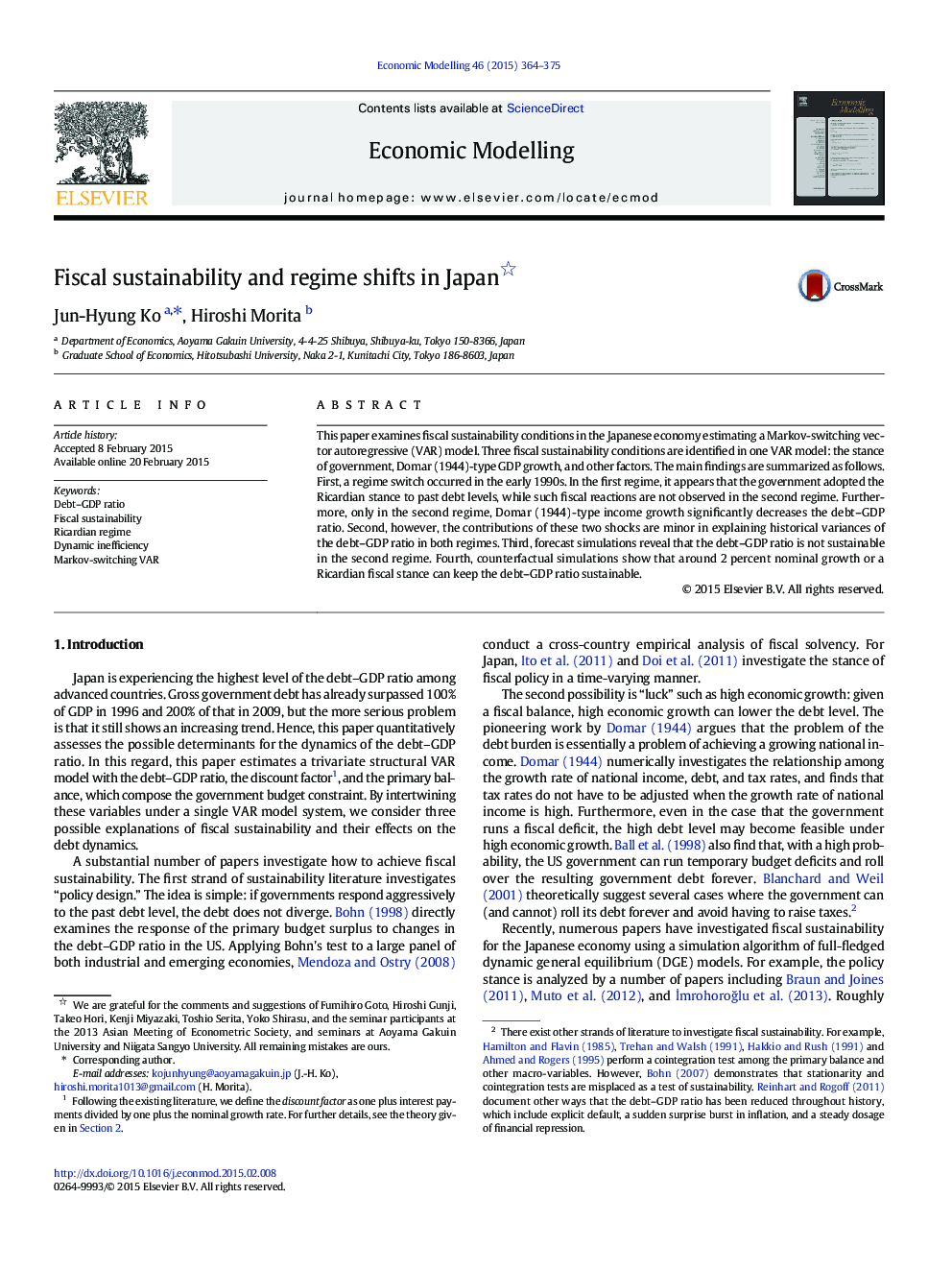| Article ID | Journal | Published Year | Pages | File Type |
|---|---|---|---|---|
| 5053795 | Economic Modelling | 2015 | 12 Pages |
Abstract
This paper examines fiscal sustainability conditions in the Japanese economy estimating a Markov-switching vector autoregressive (VAR) model. Three fiscal sustainability conditions are identified in one VAR model: the stance of government, Domar (1944)-type GDP growth, and other factors. The main findings are summarized as follows. First, a regime switch occurred in the early 1990s. In the first regime, it appears that the government adopted the Ricardian stance to past debt levels, while such fiscal reactions are not observed in the second regime. Furthermore, only in the second regime, Domar (1944)-type income growth significantly decreases the debt-GDP ratio. Second, however, the contributions of these two shocks are minor in explaining historical variances of the debt-GDP ratio in both regimes. Third, forecast simulations reveal that the debt-GDP ratio is not sustainable in the second regime. Fourth, counterfactual simulations show that around 2 percent nominal growth or a Ricardian fiscal stance can keep the debt-GDP ratio sustainable.
Related Topics
Social Sciences and Humanities
Economics, Econometrics and Finance
Economics and Econometrics
Authors
Jun-Hyung Ko, Hiroshi Morita,
